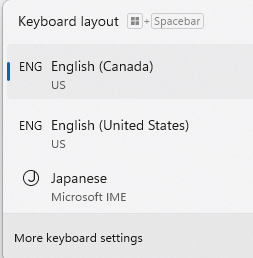If you want a shorter read, just read the text in bold. Everything else is more context.
I just finished N5 Grammar here a few days ago and while I know I have not grasped every lesson well yet, I wasn’t sure what I should be doing next. My dream is to be able to carry a conversation in Japanese with locals. Realistically, that may be a 5 or 10 year timeline as I do not live in Japan. But I’m ok with that as I am seeing progress everyday.
So I’d been reading some older community posts here as well as blog posts on WaniKani. I have several questions. But first, where I’m at:
- WaniKani - Level 22. I started Jan 2023 and paused learning new things so I cold focus more on grammar on BunPro. Still doing daily reviews and realized I have forgotten a lot though have retained more than forgotten.
- BunPro - Level 30, finished N5 Grammar. Was doing daily reviews and added Cram sessions on lessons I can’t quite grasp. The cram helped a lot with making me progress. I had not been using Vocab on BunPro.
My questions:
Q1. I was reviewing grammar for a few days after completing N5 and had no new lessons at all. Turns out I had to add a deck. So I added N4. Have not started on it. Should I have started on N4 already?
Out of curiosity, I looked into JLPT exams and found out that they are only held once a year where I live. I had no intention of taking the exams but since it’s not until December, maybe I’ll take it. I tried the sample tests here: For Examinees: Let's Try Sample Questions! | JLPT Japanese-Language Proficiency Test
I think I did ok but I definitely had to repeat the audio many times or pause it several times to understand what was said.
Q2: I read somewhere that on JLPT exams, the person in charge may NOT replay the audio no matter how much you beg. How often is it played back - once?
My Deck for Vocab after syncing with WaniKani again today looks like this:
Q3: Does this mean I still need to study a lot of Vocab to be able to pass the JLPT N5 exam?
Q4: This made me look into Vocab in BunPro. At first I was going to check my level via Cram. But then I figured I could do Lessons so that I can mark as Mastered as I go. But yikes, all of a sudden I have 300+ Review items. The lessons and reviews made some things obvious to me though:
a. WaniKani reviews ask for English meaning and Hiragana. But presented with the English in BunPro, I couldn’t recall some of the Japanese even though I know I know it already.
b. Same thing with the fill in the blanks in sentences.
So… How do I remove a deck? LOL.
Q5: I plan to read more and intend to purchase one or all of these when I’m in Japan end of June:
- Yotsubato
- picture books called わんわん探偵団 (Doggy Detectives) and にゃんにゃん探偵団 (Kitty Detectives)
- Japanese Graded Readers https://www.amazon.com/Japanese-Graded-Readers-Level-Audio/dp/4872176243
Others in this community also pointed out
- Comprehensible Japanese videos https://www.youtube.com/@cijapanese
- Bunpo check - AI tool that checks your written Japanese. https://bunpo-check.com/
- Glossika - for speaking practice https://ai.glossika.com/
I already feel like learning Nihongo is a part-time job as I spend 1-2 hours on it everyday. So the question is: What should I do next?
Oh, I just saw that BunPro has Grammar Reading Practice. Anyone use find these useful?







